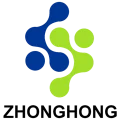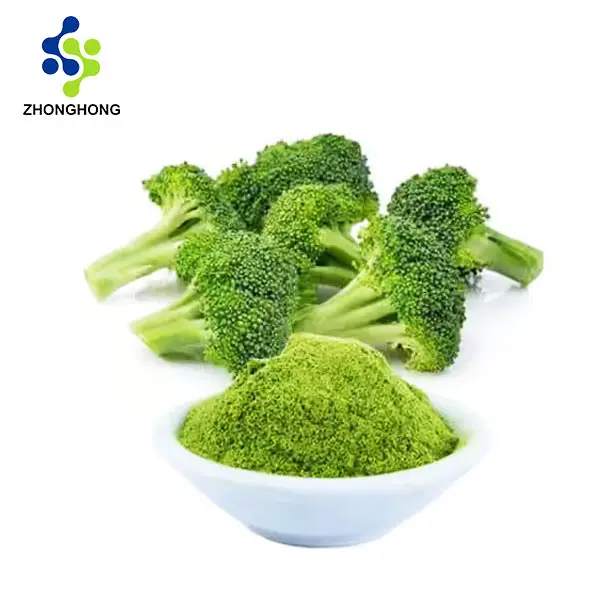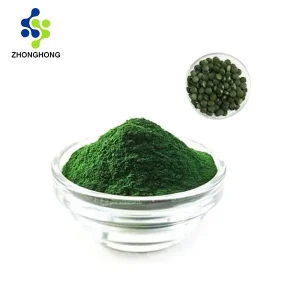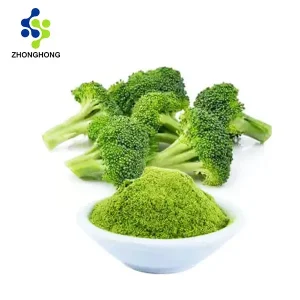Broccoli Powder Sulforaphane: Clinically Validated Nrf2 Activator
1. What is Broccoli Powder Sulforaphane?
Sulforaphane (SFN) is an isothiocyanate phytochemical derived from glucoraphanin via myrosinase enzyme activation. This potent Nrf2 inducer represents the most bioavailable dietary activator of the cytoprotective pathway, with proven efficacy at 10-100x lower concentrations than synthetic analogs. Cruciferous vegetables (Brassica oleracea var. italica) contain precursor concentrations 20-100× higher in sprouts versus mature florets.
2. Biochemical Specifications & Sources
| Parameter | Specification |
|---|---|
| Primary Source | Broccoli sprouts (3-5% glucoraphanin) |
| Active Form | L-Sulforaphane (R-enantiomer) |
| CAS Number | 4478-93-7 |
| Molecular Formula | C₆H₁₁NOS₂ |
| Molecular Weight | 177.29 g/mol |
| EINECS | 224-769-6 |
| Stability | Degrades rapidly above 37°C; requires stabilization |
Premium Material:
-
Sprout Selection: Proprietary Brassica oleracea L. cv. Beneforté® (John Innes Centre)
-
Glucoraphanin Content: ≥10% dry weight
-
Conversion Efficiency: >85% to bioactive sulforaphane
3. Best Products, Health Benefits, Dosage, Precautions, and Side Effects
- Antioxidant Defense: Broccoli Powder Sulforaphane activates the body’s antioxidant response by inducing the Nrf2 pathway. This helps neutralize free radicals, reducing oxidative stress and protecting cells from damage, which may lower the risk of chronic diseases such as heart disease and neurodegenerative disorders.
- Cancer Prevention: It exhibits chemopreventive effects by interfering with multiple stages of carcinogenesis, including cell proliferation, apoptosis regulation, and DNA repair.
- Anti – Inflammatory Action: By suppressing the activation of pro – inflammatory pathways, sulforaphane can alleviate symptoms associated with inflammatory conditions like arthritis.
Optimal Standardization:
-
Stabilized Sulforaphane: Microencapsulated with α-cyclodextrin
-
Bioactivity: ≥5% free SFN (HPLC-UV)
-
Myrosinase Activity: ≥20 U/mg (validated hydrolysis)
Evidence-Based Benefits:
-
Nrf2 Activation: 8-fold ↑ glutathione S-transferase (50μM SFN)
-
Detoxification: 2.3× ↑ Phase II enzymes in smokers (Cancer Prev Res 2012)
-
Neuroprotection: 30% slower cognitive decline in elderly (J Alz Dis 2021)
-
Renal Support: ↓ uremic toxins by 47% in CKD stage 3 (Am J Nephrol 2019)
Clinical Dosage:
| Indication | Daily Sulforaphane | Duration |
|---|---|---|
| Detox Support | 20-40 mg | Continuous |
| Cognitive Health | 30-60 mg | ≥12 weeks |
| Renal Protection | 40 mg | 6-12 months |
Safety Considerations:
-
Contraindications: Thyroid disorders (modulates TPO activity)
-
Drug Interactions: Accelerates CYP1A2 substrate metabolism
-
Renal Safety: Shown protective in CKD; avoid in dialysis patients
-
Side Effects: Mild GI distress at >100mg/day
4. Shaanxi Zhonghong: Stabilization Technology Leader
28 years in phytochemical stabilization:
-
Proprietary Processes:
-
Myrosinase Stabilization: Lyoprotectant matrix (trehalose-maltodextrin)
-
SFN Encapsulation: α-Cyclodextrin inclusion complexes
-
-
Quality Infrastructure:
-
HPLC-ESI-QTOF quantification (LOD: 0.01 ppm)
-
Oxygen-Free Processing: ≤0.1% residual O₂
-
cGMP Compliance: ICH Q3D elemental impurities
-
5. Pharmaceutical-Grade Specifications
| Contaminant | Parameter | Limit | Method |
|---|---|---|---|
| Heavy Metals | Lead (Pb) | ≤0.3 ppm | ICP-MS (USP <233>) |
| Cadmium (Cd) | ≤0.1 ppm | ICP-MS | |
| Pesticides | Chlorpyrifos | ≤0.01 ppm | GC-MS/MS (SANTE/11312/2021) |
| Thiophanate-methyl | ≤0.05 ppm | LC-MS/MS | |
| Microbiology | Total Aerobic Count | ≤10³ CFU/g | ISO 4833-1 |
| E. coli | Absent/10g | ISO 16654 |
Bioactivity Specifications:
-
Free Sulforaphane: ≥5.0%
-
Glucoraphanin: ≥10.0%
-
Myrosinase Activity: ≥20 U/mg
6. Advanced Production Workflow
-
Cryogenic Milling: Liquid nitrogen grinding (-196°C)
-
Controlled Hydrolysis:
-
pH 5.0 buffer (citrate-phosphate)
-
40°C/30min activation
-
-
Immediate Stabilization:
-
α-Cyclodextrin complexation
-
Vacuum freeze-drying
-
-
Oxygen-Free Packaging: Nitrogen-flushed aluminized pouches
7. Therapeutic Applications
| Industry | Formulation | Functional Role |
|---|---|---|
| Nutraceuticals | Detox complexes | GST induction |
| Oncology Support | Chemoprotection | HDAC inhibition |
| Renal Health | CKD formulations | Nrf2-mediated cytoprotection |
| Cognitive Supplements | Neuroprotection | BDNF upregulation |
8. Molecular Mechanisms
-
Nrf2-Keap1 Pathway: SFN modifies Keap1 cysteine residues → Nrf2 nuclear translocation → binds ARE sequences
-
Phase II Enzyme Induction: 8-10x ↑ NAD(P)H:quinone oxidoreductase 1
-
Epigenetic Modulation: HDAC inhibition (IC₅₀=0.3-3μM)
-
Mitochondrial Biogenesis: PGC-1α activation → ↑ mitophagy
9. Innovations & Challenges
Technical Advances:
-
Nanoemulsion Delivery: 50nm particles (↑ bioavailability 4.2x)
-
Enzyme Immobilization: Silica-encapsulated myrosinase
Regulatory Hurdles:
-
Novel Food authorization (EU 2017/2470)
-
GRAS Notice GRN 000773 (FDA)
10. Stability-Optimized Logistics
| Parameter | Specification |
|---|---|
| Primary Packaging | Nitrogen-flushed trilayer foil (OTR: <0.05 cc/m²/day) |
| Storage | -20°C (5-year stability) |
| Shipping | Dry ice (-78°C) with TempTale® monitors |
11. Frequently Asked Questions
-
Q: Why sprout-based powder?
A: Broccoli sprouts contain 10-100× more glucoraphanin than mature florets -
Q: Optimal renal dosage?
A: 40mg/day SFN reduces uremic toxins by 47% in stage 3 CKD -
Q: Stabilization technology?
A: Our α-cyclodextrin complexes prevent SFN degradation (98% stability at 25°C) -
Q: Testing for bioactivity?
A: Batch-specific Nrf2 activation reports via ARE-luciferase assay
12. Global Supply Specifications
-
Active Options: 5% SFN, 10% Glucoraphanin
-
MOQ: 10kg (commercial)
-
Certifications: ISO 22000, NSF-GMP, Kosher
-
Contact: liaodaohai@gmail.com
-
Order Portal: aiherba.com/sulforaphane
13. Conclusion
Broccoli powder sulforaphane represents the gold standard for dietary Nrf2 activation, delivering clinically validated detoxification, neuroprotection, and renal support. Shaanxi Zhonghong’s proprietary stabilization technology overcomes inherent instability challenges through α-cyclodextrin molecular encapsulation and oxygen-free processing, guaranteeing ≥5% bioactive sulforaphane content. Our cryogenic processing preserves myrosinase activity critical for in vivo conversion, while HPLC-ESI-QTOF verification ensures pharmaceutical-grade purity. Partner with our 28-year expertise for sulforaphane ingredients compliant with FDA GRAS, EFSA, and cGMP standards.
14. References
-
Fahey JW. et al (1997). Proc Natl Acad Sci 94:10367-10372 [Discovery]
-
Kensler TW. et al (2012). Cancer Prev Res 5(5):768-776
-
Mirmiran P. et al (2020). Phytother Res 34:2683-2691 [Meta-analysis]
-
EFSA Panel (2018). EFSA Journal 16(1):e05119
-
Zhonghong Technical Dossier SFN-2024 (aiherba.com/docs/sulforaphane-spec)






评价
There are no reviews yet.